Travel Tips
Cruising 101: How To Choose, Book and Enjoy Your Perfect Cruise
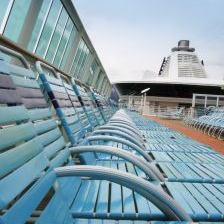 Cruising is one of the fastest-growing sectors of the travel industry. In the 25 years from 1980 to 2005, the number of Americans taking cruises rose from 1.6 million to a staggering 9.6 million.
Cruising is one of the fastest-growing sectors of the travel industry. In the 25 years from 1980 to 2005, the number of Americans taking cruises rose from 1.6 million to a staggering 9.6 million.
Fears over airline security after September 11 led directly to a surge in interest in cruises, which became more popular than ever. And now, with the frustrating nickel-and-diming tactics of the airline industry, cruising is set to become an even more attractive option.
The cruise industry has responded to increased interest with more choices than ever: newer routes include exotic itineraries such as Southeast Asia; on-board options now venture far beyond shuffleboard and bingo and into ice-skating rinks and rock-climbing walls.
As for the ships themselves, well, they just keep on getting bigger. Don’t believe us? Royal Caribbean is building what is set to be the world’s largest cruise ship: a 220,000-ton 5,400-passenger behemoth called Genesis, which is expected to set sail in fall 2009.
But bigger is not necessarily better for every traveler. If you’re a novice and thinking about cruising the high seas for the first time, you’d be wise to learn the ropes before you go. With so many choices of where, when, how much, and how far, it can get confusing and expensive.
So here is a primer on how to find and book the right cruise at the right price and the right time – and how to make it live up to your expectations.
CHOOSING A CRUISE
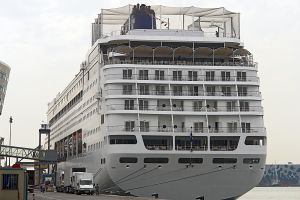 The most important question to ask when deciding from amongst the many types of cruises is: “What do I want to get out of this cruise?”
The most important question to ask when deciding from amongst the many types of cruises is: “What do I want to get out of this cruise?”
If you are looking for a short, intense three-day vacation on the coast of Mexico, there are cruises perfect for you. But if you want a mellow, meandering 14-day trip down a river, clearly you want to go a different route.
“Asking what you want from a cruise defines the size of ship you’ll choose, the itinerary, and even the specific ship itself,” said Ross Klein, proprietor of www.cruisejunkie.com, a Web site that explores the good and the bad about the cruise industry. “For example, large ships give anonymity, whereas smaller ships give a more intimate experience. Some people want to party and drink, some want to relax in the sun, and some want more sophistication. Try to tease it out in advance.”
Consider the following: How long you want to be away? Do you want to make several stops or just spend a few days on the sea? What kind of onboard activities interest you (i.e. Wine Tasting 101 versus a poolside beer-guzzling contest)? Are the kids coming along? And, perhaps most importantly, think about your base budget, and then double it — that’s what your cruise is going to cost when you consider add-ons like shore excursions and tips.
Some important distinctions: Mass-market lines like Carnival and Royal Caribbean tend to have lots of family-friendly activities along with plenty of hard-drinking crowds, but are not all-inclusive; Holland America is a little more low-key and tends to attract a more mature, less active crowd; luxury lines like Regent, Silversea and Seabourn are more sophisticated and all-inclusive, but can be pricey.
After you’ve put some thought into the kind of cruise experience you want, start doing some research. Klein recommends using a multi-pronged approach to information-gathering, by using the Internet, seeking out recommendations from friends, and even checking in with a travel agent.
It is wise to use all three as resources, because using only one or another can give an incomplete picture of what’s available. The Web can give you the basics as far as price, the size of the ship and the onboard activities, but a friend can tell you what the onboard ambiance and customer service is like. And travel agents can give you the lowdown on things like guided shore excursions and the options that will cost you extra. One caveat: Bear in mind that travel agents may have a vested interest in certain lines (some even get bonuses on top of their commissions), so don’t limit yourself to only the cruises they offer.
WHEN AND HOW TO BOOK
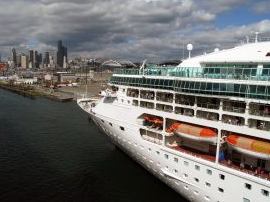 If you’re certain about where you want to cruise and on which ship, book as far ahead as possible. Summer tends to be a peak time for cruising, so these trips sell out the fastest and the furthest in advance.
If you’re certain about where you want to cruise and on which ship, book as far ahead as possible. Summer tends to be a peak time for cruising, so these trips sell out the fastest and the furthest in advance.
For example if you want to go to Alaska (one of the most popular cruise destinations) in July or August, you’ll need to book about nine months in advance. The same goes for Caribbean and European summer cruises, for which you’ll have to book at least eight months in advance.
However, if you don’t mind traveling during off-peak times such as September through December or after the holidays, you can book a Caribbean cruise much closer to your departure date — or even at the last-minute when great deals often abound. Not many cruises sail to Europe in the low season, but some companies, like Norwegian Cruise Lines, now sail to the Mediterranean in January and February.
When you’re booking, it pays to be choosy about such things as cabin size and location, so that you don’t end up in a room with a view of the lifeboats, one floor above the nightclub. Find out if your room is inside or outside, whether it is a suite or a standard room, and how many square feet it is. Most ships have floor plans available online. If you are prone to seasickness, try to get a room near the center of the ship, where there is less “roll.”
One tip: If you have to fly to your departing port, plan to arrive a day before setting sail. This allows you to rest, acclimatize yourself to the area, and most importantly, ensures that you don’t miss the boat if your flight is delayed.
WHAT’S INCLUDED, AND WHAT’S NOT
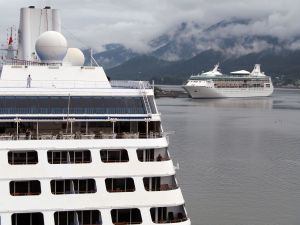 In the last couple of decades cruises have gone from being an all-inclusive experience, to a not-so-inclusive experience in terms of what your ticket buys you.
In the last couple of decades cruises have gone from being an all-inclusive experience, to a not-so-inclusive experience in terms of what your ticket buys you.
Don’t get drawn into the idea that the price you’re quoted when you book is all that you’ll end up paying. More and more cruise lines (especially budget ones) are finding ways to make money from onboard sales of everything from cocktails to massages to coffee to fitness classes. New passengers have to be aware of the temptation to spend on all the extras. And the cruise lines don’t make it easy: some are even decreasing the amount of time spent in port to encourage you to spend money onboard instead of onshore.
The term “all-inclusive” typically means that accommodation, transportation, food and entertainment are part of the package. Check online and talk to your travel agent or the tour operator to get a feel for exactly what that involves, so you don’t get a shock when you discover that “alcohol” is limited to two watered-down drinks per day.
Typical extra-cost items include: babysitting at $5 per hour; sodas at $1-$2 apiece; souvenir photographs at $20 per picture; dry cleaning at $3-$8 per item; espresso at $1-$3 per cup; group exercise at $10 per class; and dining at “alternative” onboard restaurants, which average $15-$25 per person, per meal. (Portofino, Royal Caribbean’s Italian dinner-theater restaurant, costs $20-$25 per person, minus alcohol.)
And don’t forget about shore excursions. These are usually one-day guided walking or bus trips arranged by the cruise line in advance for a set rate — which is usually overpriced (regardless of what the cruise line tells you). Most of the third-party tour operators or excursion companies that you see advertised onboard pay to be included and the cruise line gets a cut of the revenue from sales.
If you have the time and energy, do some research in advance about alternate tour companies that might offer a better deal or take you away from the run-of-the-mill sightseeing circuit. Viator is a company that specializes in guided tours in over 450 destinations worldwide.
Tips, port charges and fuel surcharges can also add hundreds of dollars to the cost of your trip, so make sure you know what you are in for before you depart. Gratuities can add up to anywhere from $10-$20 per day, and port charges may run you $100. Fuel surcharges can vary, and are added at the discretion of the cruise line. Find out before you book whether or not these charges are included in the price of your ticket, and if not, budget accordingly. (To learn who gets a tip and how much, check out this handy resource: Cruisetip.tpkeller.com.)
Get more cruise ship budgeting help with this video:
CRUISE RULES, SAFETY, INSURANCE AND OTHER MATTERSThe fine print: When you are excitedly booking a cruise to an exotic or tropical locale, it can be tempting to just hand over your credit card and hope for the best. However, Klein strongly suggests making a point to read the cruise contract. All of it.
“The ship is not liable for a lot that goes on onboard,” he said. “For example, the cruise line is not responsible for the behavior of the staff and crew, nor the treatment decisions made by the onboard doctor. A cruise ship is made up of dozens of independent concessionaires that the company is not responsible for.”
Don’t let this dissuade you from taking a cruise, however. Just be aware that you probably don’t have recourse through the cruise line if the onboard hairdresser botches your color and turns you into a redhead when you requested blond highlights.
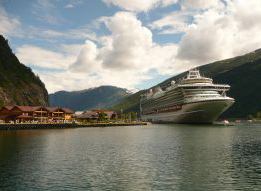 Safety: Don’t make the mistake of thinking that while you are on a cruise ship, you are sailing in a hermetically-sealed safety zone. The passengers and crew on the ship are a representative slice of the general population, which includes some good and some bad folks. Actual statistics are hard to come by, but official word is that the incidence of rape, robbery and assault on cruise ships is neither less than nor greater than on land.
Safety: Don’t make the mistake of thinking that while you are on a cruise ship, you are sailing in a hermetically-sealed safety zone. The passengers and crew on the ship are a representative slice of the general population, which includes some good and some bad folks. Actual statistics are hard to come by, but official word is that the incidence of rape, robbery and assault on cruise ships is neither less than nor greater than on land.
Cruise lines are not required to document incidents of crime that happen in international waters, though some people are trying to change that. A Sacramento woman who was raped on board a ship in 2006 then treated dismissively afterwards is currently lobbying Congress to increase security measures and documentation of crimes.
But don’t let the unfortunate incidents scare you. Use the same precautions you would use in your daily life when it comes to securing your belongings and yourself. Keep your valuables with you at all times, and leave expensive jewelry and electronics in the ship’s safe. If you’re a woman, don’t accept drinks from strangers and don’t go into someone else’s stateroom if you don’t know them well. And although drinking is a popular onboard activity, many crimes are a result of the aggression and/or vulnerability that result from alcohol, so know your limit!
If you are the victim of a crime while on a shore excursion, file a police report of the incident for insurance purposes.
Health: Ships that can carry more than 50 passengers have hospital facilities and at least one doctor on board, though the quality and size of the facilities can vary widely. Doctors are generalists and can help with minor illnesses and short-term emergency trauma care. You will most likely have to pay for things such as injections and prescriptions, which are yet another á lá carte expense to take into account when planning your trip.
Bear in mind that if you get seriously ill from a heart attack or stroke, the onboard doctor can only stabilize you until you reach the nearest port, or until a medical evacuation team can come get you.
Pregnant women and people with serious medical problems are not advised to cruise, although expectant women up to 28 weeks are generally allowed onboard. People with pre-existing conditions such as diabetes or epilepsy are usually required to notify the cruise line before departure.
News reports often highlight outbreaks of gastrointestinal illness on cruise ships, which can be caused by the highly contagious Norwalk virus, i.e. the common “stomach flu.” The problem is by no means unique to the cruise industry, which is simply more prone to it because of the Petri-dish environment on ships, where facilities are shared by hundreds of passengers. Though ships are subject to rigorous sanitation standards, the virus will still pop up from time to time. It is not pleasant if you contract it, but it’s not fatal and will eventually pass. The best thing to do is to practice good hygiene — and bring a supply of Pepto-Bismol and Imodium just in case.
Insurance: It is a good idea to purchase a medical/cancellation travel insurance policy before you set sail, to protect you if your bags are stolen, if you have to cancel your trip, or if you need to be evacuated from the ship due to illness or an accident. It’s best to buy a policy from an independent third-party provider, not the cruise line, and make sure you are aware of all the exclusions and limitations. Though many people have medical coverage back home, it often does not cover medical evacuation or protect you when you are overseas. Check with the customer service department to find out exactly where your policy covers is valid.
And finally, many cruise ships provide insurance coverage for shore excursions if you book the tour through the cruise line, but the coverage is void if you book an independent tour. Again, read the fine print of the contract before you go.
For more help on cruises, check out our Web Resources Page for more great Web sites.
By Karen Elowitt for PeterGreenberg.com.
For more, visit our new Cruises category.
Looking for some cruising alternatives? Check out Taking the Slow Boat: Freighter Trips.
Another water-bound alternative is Barging Through Europe. And don’t forget about River Cruising.












